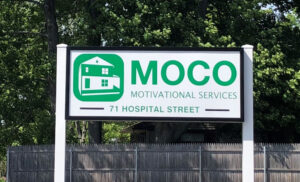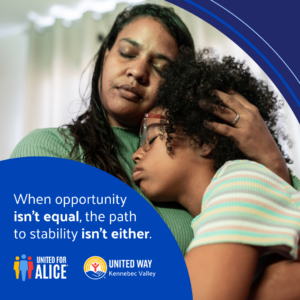In May 2024, United For ALICE launches its newest research, “ALICE in the Crosscurrents: An Update on Financial Hardship in Maine.” The data finds that while 70,445 households were in poverty in 2022, another 179,280 were ALICE® (Asset Limited, Income Constrained, Employed), earning above the poverty level but less than the cost of basics.
While many of these low-income workers saw their wages grow at the fastest rate in four decades, it wasn’t enough to eclipse the burden of inflation – making it nearly impossible for ALICE to keep pace. For a family of four with an infant and a preschooler, the costs of basics in Maine, excluding tax credits, rose from $87,468 in 2021 to $91,536 one year later. Compounding the issue in 2022 was the loss of up to $15,000 in federal child tax credits and stimulus payments that this family had access to in 2021.
These findings add to a more than decade-long trend: Since the end of the Great Recession, despite some ups and downs, the number of ALICE households in Maine has remained stubbornly high. From 2010 to 2022, the total number of households rose by 9%, households in poverty remained flat (less than 1% change) — and the number of ALICE households grew by 29%.
“The data is showing persistent and widespread financial hardship — a red flag that the current system isn’t working for ALICE,” said Stephanie Hoopes, Ph.D., United For ALICE National Director. “Current policy has not been enough to break down the barriers that trap ALICE households in financial hardship, from lack of access to housing and child care that’s affordable, to inadequate community supports such as broadband internet.”
Additional insights include:
- From 2010 to 2022, people age 65 and over made up the fastest-growing age group in Maine — and the group with the largest increase (48%) in the number of households struggling to make ends meet.
- Racial disparities persisted in the rates of financial hardship; 57% of Black and 46% of Hispanic households in Maine were either in poverty or ALICE in 2022, compared to 41% of white households.
- Food assistance continued to elude many vulnerable families in Maine. Partly due to the SNAP income eligibility level in the state (185% of the Federal Poverty Level), only 40% of all Maine households in poverty and 18% of all ALICE households participated in SNAP in 2022.
To read the Update and access online, interactive dashboards that provide data on financial hardship at the state, county and local levels, visit UnitedForALICE.org/maine.
Please join United Way of Kennebec Valley in building innovative solutions to bring financial stability to these households.







